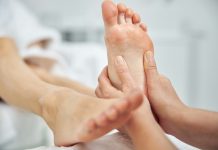
Recent research suggests that we could uncover thousands of previously unknown diabetes cases every year, simply by introducing screening for it in emergency departments of hospitals.
This came to light at a meeting of the European Association for the Study of Diabetes (EASD) held in Hamburg.
In simple terms, type 2 diabetes is a condition that affects how your body uses sugar (glucose) from the food you eat.
Too much glucose in your blood can lead to serious health problems if left untreated, like heart disease, nerve damage, and issues with your eyes.
Diagnosing diabetes early is crucial to avoid these complications and to ensure a healthy, long life.
The trouble is, the symptoms might not show up for up to 10 years, making it a bit of a silent threat. This is where the research, led by Professor Edward Jude in the UK, steps in.
The Study in a Nutshell
The research involved screening 1,388 random patients who visited the A&E department at a hospital in England for type 2 diabetes.
This wasn’t previously a routine practice since symptoms of diabetes can be quite sneaky and don’t always send people to the hospital.
In the screening, they used a test called the HbA1c, which helps figure out average blood sugar levels over recent months.
Plus, patients filled out a form about their backgrounds and potential risk factors for diabetes. A score was then calculated, which gave a picture of their risk level for developing diabetes in the future.
From those screened, 420 people (or 30%) were found to be on the brink of developing diabetes, and 120 (or 9%) were diagnosed with type 2 diabetes on the spot.
People from South Asian and other ethnic backgrounds were twice as likely to be diagnosed with pre-diabetes or diabetes compared to Caucasians.
What This Could Mean for Us
This might sound like a lot of medical speak, but the bottom line is quite exciting: emergency rooms might be a useful place to catch diabetes early, especially for people who are at risk but haven’t been diagnosed yet.
This isn’t just a matter of handing out diagnoses but taking the opportunity to catch a serious, often silent condition in its early stages, opening doors to early treatment and lifestyle adjustments that can significantly enhance quality of life and longevity.
With these findings, Professor Jude suggests that such screenings, especially among high-risk and otherwise difficult-to-reach groups, could be a significant step forward.
The screening could also help make sure that people who are most likely to develop type 2 diabetes are aware of their risk and can take steps to manage it effectively.
Although these findings could point towards a future where diabetes screening in emergency rooms is common practice, it’s important to note that this study was done in a single hospital.
So, rolling this out on a larger scale would need more research and trials in different hospitals and potentially across different countries.
Understanding these implications, the question arises: could such screenings become a common practice in emergency rooms worldwide? Only further research and time will tell.
This revelation potentially paves the way toward a future where the stealthy development of type 2 diabetes is intercepted earlier and more effectively for many, ultimately saving lives and improving living conditions for those at risk.
In essence, converting emergency rooms into hubs for early diabetes detection not only unearths undiagnosed cases but also fosters an environment where proactive measures can be taken promptly, thus weaving a safety net for those unknowingly walking a tightrope above potential health crises.
The silent progression of diabetes thus encounters a loud halt, mitigating its sneak attack on our well-being and longevity.
If you care about blood sugar, please read studies about why blood sugar is high in the morning, and how to cook sweet potatoes without increasing blood sugar.
For more information about diabetes, please see recent studies about 5 dangerous signs you have diabetes-related eye disease, and results showing why pomegranate is super fruit for people with diabetes.
Follow us on Twitter for more articles about this topic.
Copyright © 2024 Knowridge Science Report. All rights reserved.



